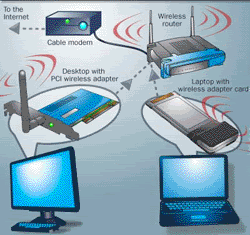Tuesday, 22 March 2011
How Modems Work
How Modems Work
Most modems that are used on a PC or laptop today is to use asynchronous techniques. This Asynchronous means that when the modem is sending data without using a clock to synchronize the activities of the two systems are connected. Data sent in a byte within a frame at a time. The frame contains a start bit, data, and usually one or more stop bits. Start and stop bits is what tells when and where such data. Because of this function, the recipient will know where the data and what is noise, so that can know which ones are acceptable or not. This modem can also be used as a parity error detection. There are two parity is used, the odd and even. Type of modem that uses this parity is rarely used at the present time. Standardization of Transmission System To standardize the transmission system from the modem, then the two world bodies ie CCITT (Consultative Committee International Telegraphique et Telephonique) and ITU (International Telecommunication Union), issued a standard called the V-dot. This standard relates to the speed of a modem work, type of data compression and error handling data.
Modem Functions
Modem function is to convert voice signals into digital signals and vice versa. Today the modem has been developed with various facilities which is useful, for example, voice modem. With this facility, voice modem, change the modem function not only as a connector to the Internet but more than that, the modem can be a radio channel, audio, telephone conversations through streaming video.
Source: Articel Wekekek's
Label:
Modem Functions




No comments:
Post a Comment